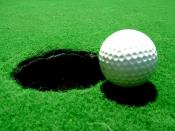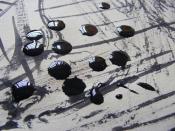Table of contents
1. Introduction1
2. Problem Statement1
3. Hypothesis1
4. P-value1
5. Statistical summary2
6. 95% confidence interval 2
7. Conclusion3
Appendix 14
1. Introduction
This report is about the case study of PAR, INC. From the following book: Statistics for Business an Economics, 8th edition by D.R. Anderson, D.J. Sweeney and Th.A. Williams, publisher: Dave Shaut. The case is described at page 416, chapter 10.
2. Problem statement
Par, Inc. has produced a new type of golf ball. The company wants to know if this new type of golf ball is comparable to the old ones. Therefore they did a test, which consists out of 40 trials with the current and 40 trials with the new golf balls. The testing was performed with a mechanical fitting machine so that any difference between the mean distances for the two models could be attributed to a difference in the design.
The outcomes are given in the table of appendix 1.
3. Hypothesis testing
The first thing to do is to formulate and present the rationale for a hypothesis test that Par, Inc. could use to compare the driving distance of the current and new golf balls. By formulation of these hypothesis there is assumed that the new and current golf balls show no significant difference to each other. The hypothesis and alternative hypothesis are formulated as follow:
Question 1
H0 : �- �= 0 (they are the same)
Ha : �- �? 0 (the are not the same)
4. P-value
Secondly; analyze the data to provide the hypothesis testing conclusion. The p-value for the test is:
Question 2
Note: the statistical data is provide in � 5.
-one machine
-two populations
-no other influences mentioned
-independently chosen
Conclusion: Independent sample
Table Standard Normal Distribution (inside the cover of the book)...


